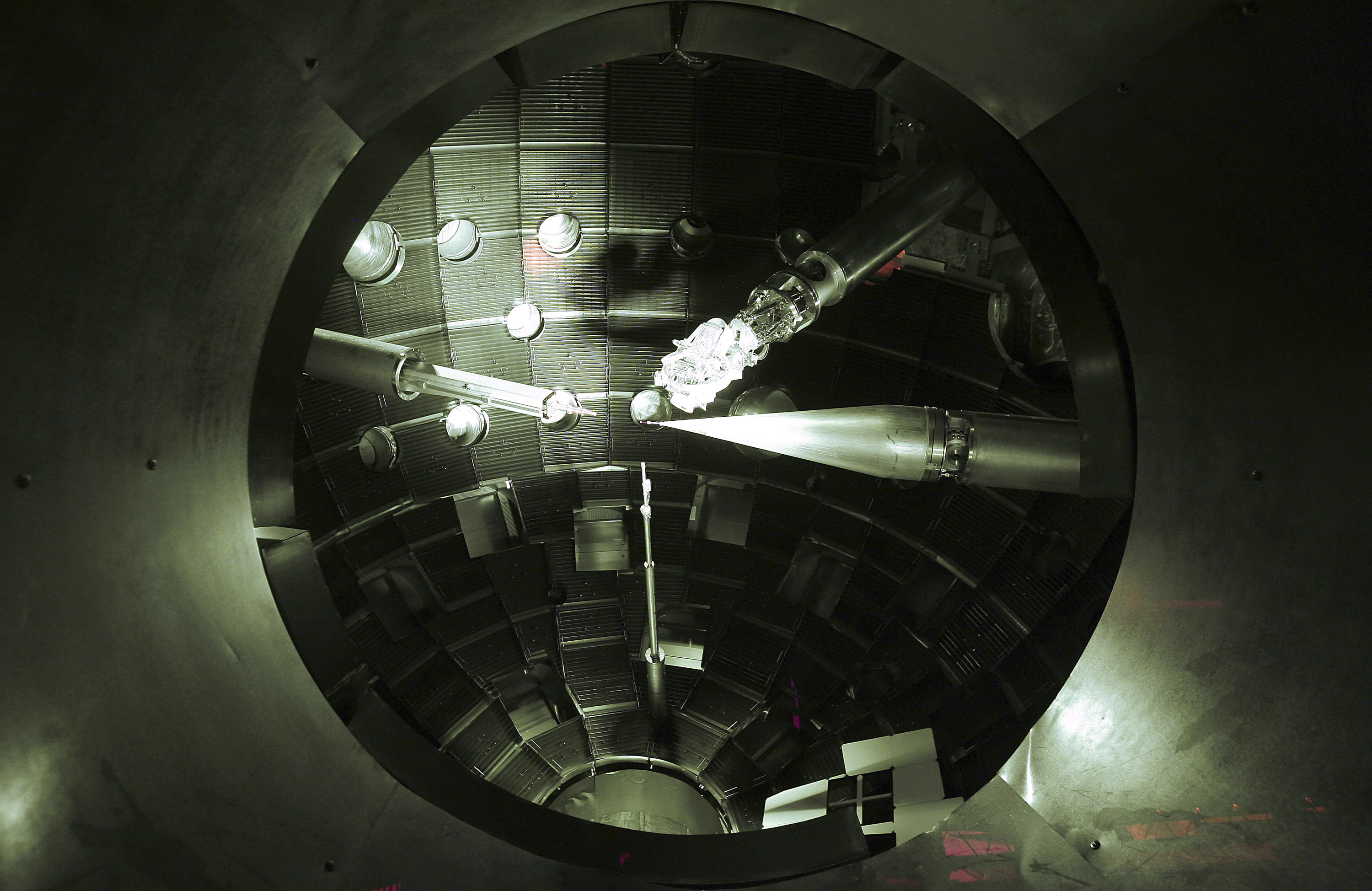
A nuclear fusion reaction that gives out more energy than puts in has been demonstrated by U.S. scientists for a second time. The successful experiment takes us one small but meaningful step closer to creating a new source of limitless clean energy.
By firing the world's most energetic laser beam to briefly transform a pellet of hydrogen isotopes into a fiery plasma, the physicists produced a higher net-energy gain than they did on their first attempt last year.
"Since demonstrating fusion ignition for the first time at the National Ignition Facility in December 2022, we have continued to perform experiments to study this exciting new scientific regime. In an experiment conducted on July 30, we repeated ignition at NIF," the researchers said in an emailed statement. "As is our standard practice, we plan on reporting those results at upcoming scientific conferences and in peer-reviewed publications."
Related: Fusion power key to Earth's survival, says Bill Nye in exclusive interview
Scientists have been trying to find practical methods to create nuclear fusion — the process that makes stars like our sun burn — since the 1940s. Stars fuse hydrogen atoms to make helium under extremely high temperatures and pressures, converting matter into light and heat and producing energy — without also creating damaging byproducts such as greenhouse gases or radioactive waste.
Recreating these conditions on Earth, however, is far from simple. Besides hellish temperatures and immense pressures, vast amounts of energy are needed to transform fuel into a plasma, ignite it and safely corral it with powerful magnetic fields or laser beams.
This feat has so far, only been demonstrated by the NIF, at the Lawrence Livermore National Laboratory in California. And the NIF only did so in an experiment that sputtered out in less than ten billionths of a second.
Two types of reactors dominate current fusion experiments: magnetic confinement reactors, which steer heated plasma with magnetic fields; and inertial confinement reactors like the one at the NIF. The NIF’s experiment streamed photons, or light particles, into two ends of a cylinder inside the reactor's core to strike the inner walls of a gold capsule containing tritium and deuterium, producing X-rays that heated the fuel pellet.
This sparked a reaction that created more energy than the lasers put in (in the first experiment, roughly 3.15 megajoules output for the 2.05MJ input). However, neither experiment produced more energy than the enormous amount expended to power the whole reactor, with the reaction beginning and ending in a tiny fraction of a second.
Scientists have warned that getting more energy out from the entire reactor than was put in could take several decades, so advancements likely won’t arrive in time to help humanity fight climate change. These experiments do, however, provide compelling evidence that the power of stars could one day be used to power human life on Earth.
Editor's Note: The first sentence of the story was updated at 11:50 a.m. E.D.T. on Aug. 10 to note that the reaction puts out more energy than is put in, not vice versa.







